NFL and College Football Going Head to Head
The most popular television product is running out of room to expand.
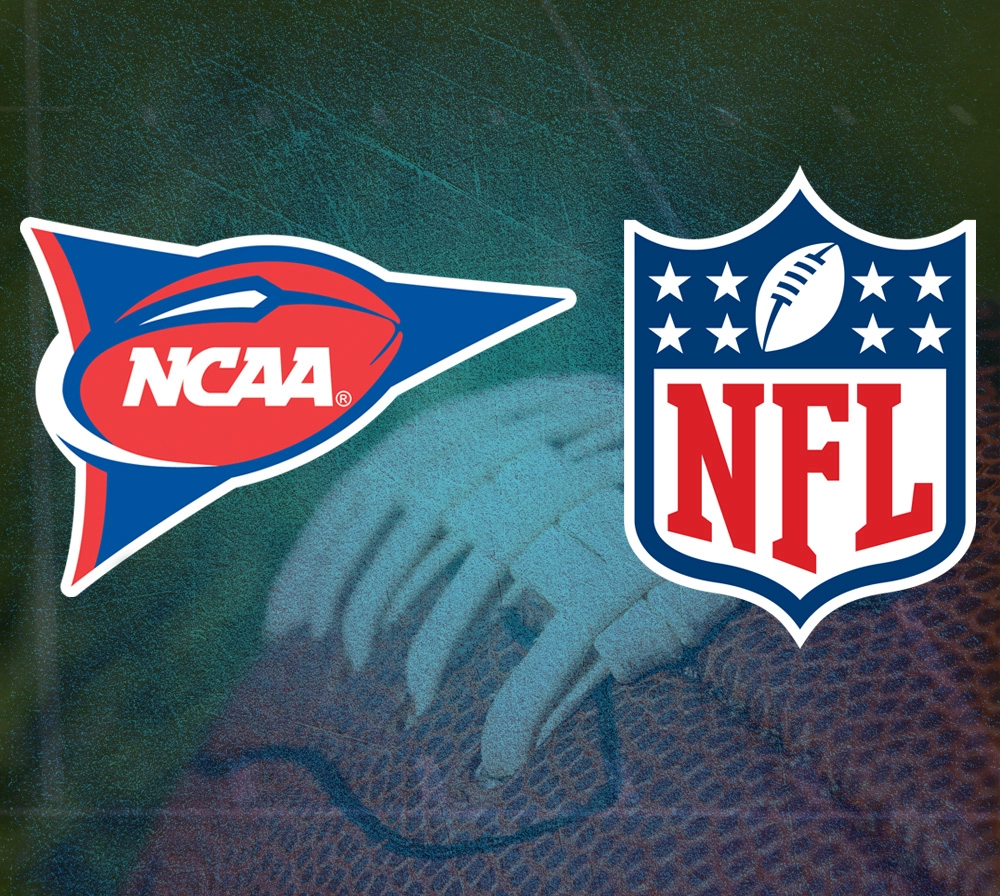
The Athletic‘s Chris Vannini explains “Why College Football Playoff expansion means battle with NFL for TV time is building.” In so doing, he takes us into the economics of the sport and the history of regulation.
The setup:
The longtime television broadcasting peace between the NFL and college football may be nearing an end. College and pro games are typically played on separate days or in different time slots, but they’ll soon be competing for the same viewership eyeballs. The only thing preventing an all-out fight for viewership supremacy is a law from Congress that dates back more than 60 years.
There are two fronts to this battle. The first is College Football Playoff expansion. The management committee of conference commissioners is hurrying to try to implement expansion to 12 teams as soon as the 2024 season. One of the toughest hurdles is figuring out if it can and should schedule first-round and semifinal games on Thursdays or Saturdays, going up against the NFL regular season and playoffs. The quarterfinals will be around New Year’s Day.
The second front is Black Friday, with the NFL adding an afternoon game on the shopping holiday in 2023 that will stream on Amazon Prime Video. That will take place directly against multiple college games.
Live sports are about the only broadcast programming that consumers regularly view live, thus forcing them to endure the advertising. Football is far and away the most popular sport in America and thus the most popular television program.
The natural inclination for those who own highly coveted entertainment properties is to produce more of it. But this means that the tacit agreement that held for decades—Friday nights were for high school football, Saturday is for college football, and Sunday (and Monday) is for the NFL—has to give way.
The inflection point has arrived. Some commissioners and CFP executives say privately that their sport can no longer cede ground and must take on the NFL.
The NFL and college football have rarely clashed in TV windows. In conjunction with media partners, there’s been a general understanding: They’ve typically avoided each other and separately owned certain days, historically working hand-in-hand. College football provides the player developmental system to the NFL at no cost to the league.
High school doesn’t really factor in here except that high school ball is the feeder for college ball. (Although less so than was the case even a decade or so ago, with the rise of private 7-on-7 ball and such once-inconceivable entities as IMG Academy.)
“I do think they are allies, but I wouldn’t say they’re partners,” said Travis Vogan, an Iowa professor who has written multiple books on the NFL’s television history.
Pro football is played on Sundays because, at its founding, college football was a more popular sport and had already claimed Saturdays. Pro football and the NFL from its infancy largely tried to avoid conflicting with college football because it didn’t want to compete.
Now, the two sports find themselves in the opposite position. The NFL is the king of television, with 75 of the 100 most-viewed broadcasts last year, according to Sports Business Journal. College football had six. Only the biennial Olympics can compare (11 of the top 100), while nothing from the NBA, MLB or NHL qualified.
“College football is the No. 2 sports property in the United States,” said William Mao, senior vice president of global media rights at Octagon. “Second to the NFL, it’s the only other one that resonates in that top 100.”
A random preseason NFL contest or matchup between two also-ran college football teams will draw more eyeballs than most NBA or MLB playoff games.
And, while I sort of knew the history that follows, it’s really quite astounding:
How did college football and the NFL reach this point? It all goes back to the Sports Broadcasting Act of 1961.
The law, passed by Congress and signed by President John F. Kennedy, allowed the NFL to pool its TV rights as a single entity, leading to the sport’s financial boom. Up to that point, individual NFL teams had their own TV deals.
The NFL’s first attempt to pool rights to sell to CBS in 1961 was blocked by the courts as an antitrust violation. The judge said it would prevent competition between teams for TV money. So NFL commissioner Pete Rozelle went to Congress to get an antitrust exemption. The NFL argued it needed to pool its rights for smaller market franchises to survive, otherwise the league would destabilize.
The bill had support in Congress. The shared sacrifice of the richest teams would spur competitive balance, supporters said, and it would help competing leagues like the new AFL, which had already pooled rights in a deal with ABC.
“The Green Bay Packers could never have survived without protection,” Vogan said.
There was immediate concern across college football about the potential for the NFL on national TV to stake a claim to Saturday, so the sport’s leaders did their own lobbying. NCAA executive director Walter Byers urged member schools to telegraph or airmail letters to their members of Congress.
A September 1961 letter from Wyoming athletic director Glenn Jacoby to Kennedy staffer Mike Manatos laid out the details. In the letter, obtained by The Athletic from the JFK Presidential Library and Museum, Jacoby wrote that the bill had a small exemption window carved out to protect college football. It would last from noon to 6 p.m. on Saturdays and from the second Saturday in September to the last Saturday in November.
Read the exchange of letters here.
But college sports leaders wanted to expand that protection. Jacoby wrote that the window should last from noon to midnight Saturday because many college games were played at night. He also asked the window to extend to the second Saturday in December to account for early-December college games.
“It is very apparent if the professional leagues push through this legislation indicated it would only be a matter of time until intercollegiate sports end up down the drain,” wrote Jacoby, who included two tickets to Wyoming’s upcoming game against Utah with the letter. “I would certainly appreciate anything you might do in this respect.”
Manatos, a Wyoming native, replied to Jacoby and noted the adjustment had support in the House of Representatives. “I find the small sampling I have taken to be sympathetic to your point of view,” Manatos wrote.
The House Judiciary Committee extended the start of the window to 6 p.m. on Friday night, to protect high school football as well, until midnight Saturday. Byers and the NCAA approved of the additional protection.
The bill passed and Kennedy signed it into law on Sept. 30, 1961, just three weeks after it had been introduced. Football broadcasts have largely abided by the law ever since. The AFL continued to host a handful of Friday and Saturday games until the completion of its merger with the NFL in 1970.
This is rent-seeking at its finest. NFL owners wanted a carveout from antitrust legislation to allow them to act as a cartel. Simultaneously, the leadership of the college game wanted to Congress to legally forbid competition from the pros. Both not only got what they wanted but did so in record time.
It is essentially U.S. law that college football owns fall Saturdays until mid-December and the NFL owns fall Sundays. Monday Night Football exists in its spot during the week because the NFL could not create a weekly Friday night or Saturday night game due to the law, Vogan said.
“College football has a lot of support from politicians who would have a fit if anything got in the way of college football on Saturdays,” he said.
The NFL is a behemoth because of the moves made with the Sports Broadcasting Act, not that anyone quite knew it at the time.
“There was an argument made in the 1960s that television might destroy sports because they were so dependent on live attendance,” said Gabe Feldman, director of Tulane’s sports law program. “They didn’t envision it becoming a multi-billion-dollar TV industry. If they had, they likely would have handled things much differently.”
Indeed, as late as 1973 President Richard Nixon tried to strongarm the league into ending its policy of “blacking out” games whose tickets were not sold out from television broadcasts. When they refused to go along, Congress actually passed a law (since expired) limiting the practice.
Regardless, while the 62-year-old legal regime still holds, the NFL is exploiting the gaps.
With its expansion and national TV deals, pro football overtook college football in popularity, and the NFL later set its sights on unprotected college TV windows.
Thursday Night Football was once a college football staple, with big games like Florida State-Virginia in 1995 and Rutgers-Louisville in 2006. But the NFL began to play Thursday night games in the weeks after Thanksgiving in 2006. That schedule expanded to nearly the entire season. Now, Amazon pays the NFL $1 billion annually to exclusively stream on Thursday nights. College football still plays on Thursdays, but rarely with top-tier matchups.
The sport and its media partners have instead added more Friday night games, in part because conferences have gotten bigger, squeezing Saturday availability. The Sports Broadcasting Act protected high school football nights from the NFL, but not from college football. Almost every conference has added a few games on Fridays, much to the chagrin of high school coaches and fans. The SEC does not play Friday night games, citing the value of high school football, but the Big Ten plans to add more in its new media rights deal.
If you wonder why the NFL’s new Black Friday game will kick off at 3 p.m. instead of at night, it goes back to the Sports Broadcasting Act, which bans pro football after 6 p.m. in the fall. Still, that game will go up against college Black Friday rivalry games like Iowa-Nebraska.
“We have really come to appreciate and enjoy Black Friday,” Iowa athletic director Gary Barta said. “The NFL coming in, I can’t control that. We can’t control that. So if it happens, we’ll just have to find room for everybody.”
One would think that, at some point, having games on every day of the week would make them less special. We have apparently not come close to hitting that threshold, though.
Meanwhile, remember the title of Vanini’s piece?
But the encroachment goes both ways. The Sports Broadcasting Act window ends in mid-December, which means college football will move into NFL territory with CFP expansion.
First-round games played two weeks after conference championship games would take place the same weekend the NFL begins Saturday games (along with its Thursday game). Friday and Saturday may be the best options for college football, the latter directly against the NFL. Playing games on Wednesdays has been discussed by the committee but is not favored.
A little more than a week after New Year’s-centered quarterfinals, the semifinals would go up against the NFL’s wild-card playoff weekend. Would college football put semifinals on Thursday or Friday to avoid it?
“I’m not ready to report about anything we might do or decided to do, but we’re certainly aware,” CFP executive director Bill Hancock said of NFL dates.
There’s really not much choice. Both fan interest and the almighty dollar demand playoff expansion beyond the current four teams. But, in December, Fridays and Saturdays are a free-for-all. So the college and pro versions of the sport will go helmet to helmet. (Which is an ejectable foul in both.)
No matter where the CFP places its new games, it needs agreement from ESPN, which has exclusive CFP rights until the 2026 season. Going up against the NFL is often a ratings disaster. There is a reason ESPN broadcasts events like bowling during NFL Sunday windows: Most sports fans will watch the NFL over almost anything else.
“That’s what’s happening,” Mountain West commissioner Craig Thompson said. “ESPN will have a big say and voice when they think they can get the biggest rating and monetize their investment.”
Sankey did feel, however, that SEC viewership was strong against the NFL in December 2020, when the pandemic extended the college football regular season. The SEC championship between Alabama and Florida had 8.9 million viewers on CBS while competing with the NFL. That was the game’s lowest viewership since 2006, in part due to the competition, but it outdrew the Packers-Panthers game on NFL Network in that same slot, which had 5.61 million viewers. Still, it showed that the NFL, even on a channel in fewer households, impacted college football on network TV. That’s why broadcasters would rather avoid the competition.
Again, unless we’re going to have playoff games on Tuesdays or Wednesdays, there aren’t a lot of options.
College football could move up its regular season to start the weekend before Labor Day weekend, currently known as Week 0, in an attempt to free up more windows in December. That would put conference championship games on Thanksgiving weekend and allow first-round games to be played in the protected Saturday window. But that would require large-scale agreement and isn’t on the table for the CFP until 2026 at the earliest.
It would be odd to start college football games before most schools report for class but it’s hardly unprecedented. Oh, that’s right, school:
NFL overlap is far from the only CFP issue. In last week’s meeting, Hancock said the committee has a calendar that also includes holidays and graduation commencement ceremonies that could interfere with CFP games. Proper recovery time for players in these games is also top of mind.
The playoff already encroaches on final exams and winter vacation. Not to mention, stretching into what is some school’s spring semesters.
Regardless, it’s fascinating stuff. A few years back, when the NFL was threatening to expand its schedule to compete directly with NBA games, Dallas Mavericks owner Mark Cuban remarked, “Pigs get fat, hogs get slaughtered.” He added, “I’m just telling you, when you’ve got a good thing and you get greedy, it always, always, always, always, always turns on you. That’s rule number one of business.” Thus far, while there have been occasional rating slumps, that just hasn’t happened.
Still, it just makes sense for the NFL to cooperate with its feeder system. More fan excitement for the college game is good for the pro game.


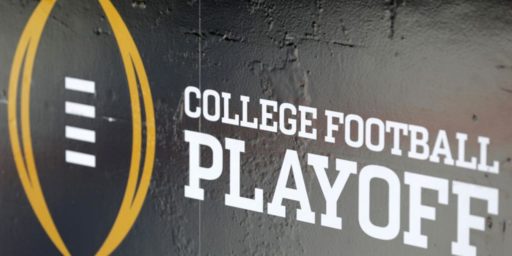
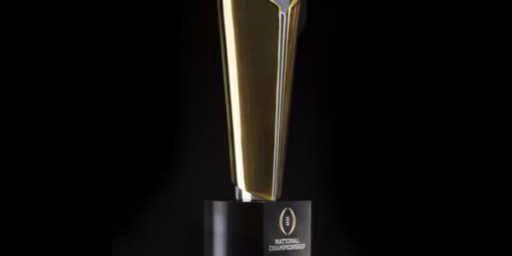
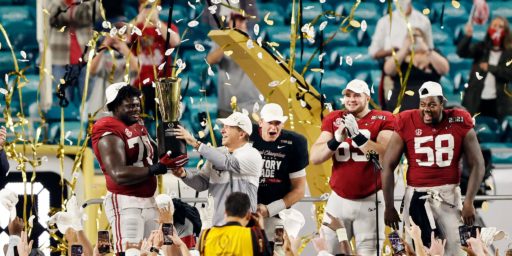
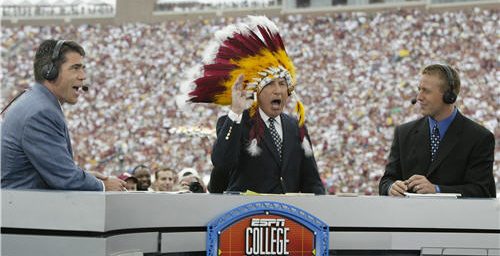
Just let the NFL acquire college football, so it will work openly as the NFL farm system it is. Then they can move all college games to Spring or Summer, and milk the herd without competition.